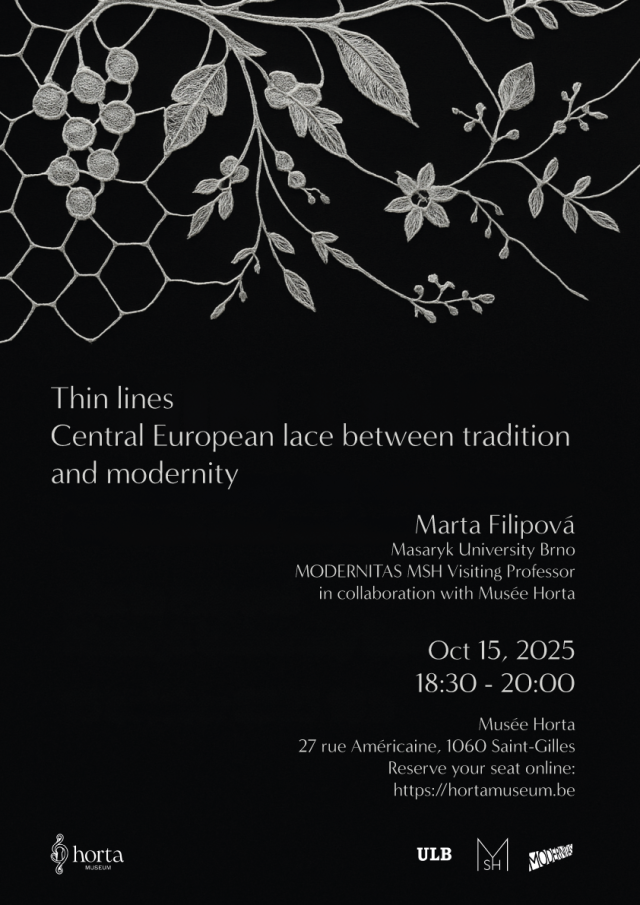Conference "Thin lines. Central European lace between tradition and modernity"
15/10/2025
by Marta Filipová, Masaryk University Brno
In collaboration with Horta Museum
Although often perceived as a traditional and decorative craft, lace emerged in the early 20th century as a surprisingly modern and emancipatory artform. In collaboration with the Horta Museum, the MODERNITAS team invites you to a lecture that explores how artists in Central Europe and beyond transformed lace into a medium of abstraction, national representation, and female authorship.
Lace is not very often considered a piece of modern art or design that adopts the language of Art Deco or abstraction. Instead, it is usually seen as a traditional, often handmade fabric crafted anonymously for decorative, occasionally practical purposes in the home and on dresses. Yet at the beginning of the 20th century, Central European lacemaking underwent an important transformation. Drawing on its links to home industries, it became much more than an economic activity. Lace was turned into a self-sufficient artform, a means of emancipation and a source of income and recognition for many designers. Artists of the Viennese Werkstätte, German Werkbund or its Czechoslovak equivalent turned lace into a modern medium that could successfully represent individuals, institutions and states. Leni Matthaei, Dagobert Peche, or Emilie Paličková Milde became recognised for the intricacy and modernity of their lace that abandoned decorativism in favour of abstraction and free expression. Paličková Milde, for instance, was a highly successful female artist who received many prizes at international exhibitions, including those in Paris (1925) and Brussels (1935).
Apart from the modern aspects of lace, the lecture highlights somewhat hidden side of modern lacemaking as the artists behind the prized designer lace were not the makers. The many hands that actually turned their designs into the final pieces and often invested their own creativity in the production process went mostly unrecognised. The anonymous character of the making therefore survived from its origins in small lace-making communities. Focusing mainly on Central Europe of the modern period, the paper addresses the questions of labour, modernity and authorship also in other communities and other parts of the world, including Finnish Kale Roma and Native American women lacemakers. It therefore sheds light on global aspects of modern lacemaking in order to interrogate the meaning of agency, authorship and emancipation in these cases.
Marta Filipová works at the Department of Art History at Masaryk University Brno where she leads the research project “Beyond the Village: Folk Cultures as Agents of Modernity, 1918-1945.” She specialises in art and design of modern Central Europe and the questions of exhibitionary cultures and identities. Her most recent publication is Czechoslovakia at the World’s Fairs: Behind the Façade (CEU Press, 2024). She has edited the volume Cultures of International Exhibitions. Great Exhibitions in the Margins (Ashgate, 2016), published Modernity, History and Politics of Czech Art (Routledge, 2021), and various articles on art and design in for example the Journal of Design History, Nationalities Papers and Austrian History Yearbook.
Wednesday 15 October 2025, from 6:30 pm until 8 pm
Musée Horta
27 rue Américaine
1060 Saint-Gilles
Reservation required via the Horta Museum website.

